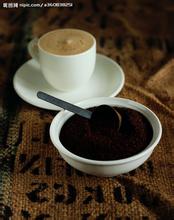Introduction to the quality characteristics of Peruvian Coffee Bean roasted degree and Flavor description treatment
Introduction to the roasting degree of Peruvian coffee beans
The most suitable baking degree varies depending on the type of coffee beans. Someone asked me how to find the most suitable baking degree. My answer is "can only be inferred in my own way", and I must also learn the "basic baking" learning program. The learning method is to roughly fry coffee beans from Cuba or Ethiopia to Italian deep-roasting (Italian Roast), test the taste at the prescribed baking stage and keep it in mind.
At first, it can be divided into four stages: shallow baking, moderate baking, medium-depth baking and deep baking. After the habit, there are 8 stages, 16 stages, and sometimes subdivided into 24 stages and 32 stages, which are confirmed by cup testing as the taste changes from very shallow baking (Light Roast) to very deep baking. This is the "basic roasting" of Baja Coffee, a coffee shop opened by Taguchi in Japan.
The characteristics of ● coffee beans can be divided into four types.
When it comes to the baking stage, it may be acceptable, but if there are 16 stages or 32 stages, you may back off. However, I always believe that this kind of training will be of great benefit in the future. Why learn something so complicated? The main purpose is to enable you to bake exactly the degree of baking you want at any time and stop baking at the right time.
In the old work "the Collection of Fine Coffee", all kinds of coffee beans are divided into four types according to their characteristics. To put it simply, from soft A-type coffee beans of low real estate to hard D-type coffee beans of high land are distinguished in different colors, indicating the baking method and baking degree consistent with their type.
For example, coffee beans from highlands such as Kenya and Colombia are classified as type D because of their thick meat, large grains and high water content. Type D coffee beans have poor heat permeability and strong sour taste, so it is not suitable to adopt the baking degree of "light baking to moderate roasting" like type A. It is more suitable for "medium-deep baking to deep baking" which will produce a strong bitter taste.
What would happen if type D coffee beans from Kenya or Colombia were roasted with shallow roasting similar to type A? I'm afraid the heat can't penetrate the bean core, producing a "sour taste" mixed with bitterness and acid. Nor can it lead to its inherent bitterness and mellowness. In this way, the rare Kenyan or Colombian coffee beans will be wasted and end up in vain.
In order to reduce even a little of this "useless work", I figured out a baking table named "systematic Coffee" (see table below). If you use this summary table, you won't make the stupid mistake of using the shallow roasting of roasted A-type coffee beans to bake hard D-shaped coffee beans. Each kind of coffee bean has its own suitable or unsuitable baking degree. Making delicious coffee with obviously unsuitable roasting degrees is nonsense.

Important Notice :
前街咖啡 FrontStreet Coffee has moved to new addredd:
FrontStreet Coffee Address: 315,Donghua East Road,GuangZhou
Tel:020 38364473
- Prev

Kenya Garchasha Coffee Flavor Characteristics Graded Taste Grind Scale Introduction
Kenya's growth in coffee production has been remarkable, with exports rising from 800,000 bags in 1969- 1970 to 2 million bags in 1985-1986. The average yield is stable at 1.6 million bags, with an average yield of about 650 kg/ha. Even before the coffee price spike, the average price of coffee in Kenya had been rising. 1993--1994 Prices are 50% higher in 2010 than they were 12 months ago. price
- Next

Sumatran Coffee Flavor description Taste quality characteristics introduction of Grinding Calibration treatment method
Sumatra Coffee Bean introduction Manning Coffee: Manning Coffee is produced in Sumatra, Indonesia, Asia, also known as Sumatran Coffee. Her flavor is very rich, fragrant, bitter, mellow, with a little sweetness. Most coffee lovers drink on their own, but it is also an indispensable variety for blending coffee. Basic information Manning coffee is produced in Indonesia in Asia.
Related
- Detailed explanation of Jadeite planting Land in Panamanian Jadeite Manor introduction to the grading system of Jadeite competitive bidding, Red bid, Green bid and Rose Summer
- Story of Coffee planting in Brenka region of Costa Rica Stonehenge Manor anaerobic heavy honey treatment of flavor mouth
- What's on the barrel of Blue Mountain Coffee beans?
- Can American coffee also pull flowers? How to use hot American style to pull out a good-looking pattern?
- Can you make a cold extract with coffee beans? What is the right proportion for cold-extracted coffee formula?
- Indonesian PWN Gold Mandrine Coffee Origin Features Flavor How to Chong? Mandolin coffee is American.
- A brief introduction to the flavor characteristics of Brazilian yellow bourbon coffee beans
- What is the effect of different water quality on the flavor of cold-extracted coffee? What kind of water is best for brewing coffee?
- Why do you think of Rose Summer whenever you mention Panamanian coffee?
- Introduction to the characteristics of authentic blue mountain coffee bean producing areas? What is the CIB Coffee Authority in Jamaica?

